After years of navigating muddy trails, steep climbs, and rocky switchbacks, I’ve learned that your boots can make or break the journey. Blisters and arch pain used to end my hikes early, until I discovered the Orthopedic Mid Trekking Hiking Boots. These boots promised orthopedic-level support, and I wanted to put them to the test. Little did I know, they’d become one of the most important pieces of gear in my backpack.
Comfort on the Trail: Can These Boots Truly Reduce Foot Fatigue?
I tested Orthopedic Mid Trekking Hiking Boots on three day-long hikes with different terrains, from forest paths to rocky trails. You’ll immediately notice the orthopedic support built into the midsole. These boots cradle your arches and reduce impact with every step. The interior padding feels plush without being bulky, and the collar holds your ankles snugly without cutting into your skin.
When you wear this hiking boot, your feet feel secure and well-aligned even after hours on your feet. If you suffer from flat feet or plantar fasciitis, the difference will be obvious on your first hike.
Even during long ascents, I didn’t experience the usual midfoot fatigue or heel discomfort. The cushioning in these boots feels like it was made for serious trail endurance. I’ve worn boots from top brands like Salomon and Merrell, but these feel uniquely focused on medical-grade support.
Orthopedic Mid Trekking Hiking Boots for Men on Amazon!!!
Orthopedic Mid Trekking Hiking Boots for Women on Amazon!!!
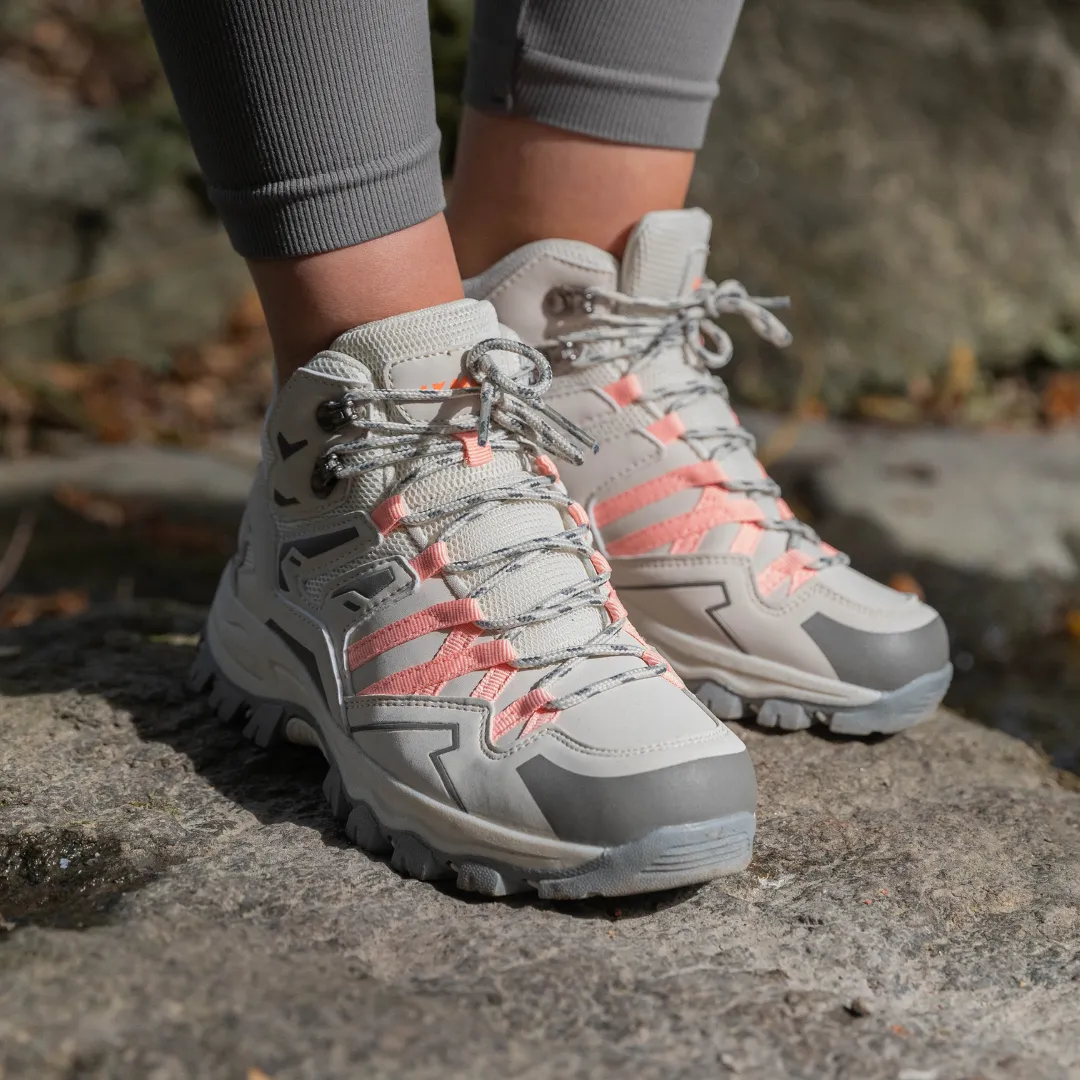
Grip, Balance, and Water Resistance: Trail Testing in Real Conditions
The outsole traction on Orthopedic Mid Trekking Hiking Boots genuinely surprised me in the best way possible. While hiking along loose gravel paths and slippery, algae-covered roots in the forest, I expected at least a few missteps. But the deep, multidirectional lugs gripped the terrain with confidence. Whether I was scrambling down a slope or navigating a trail scattered with wet pine needles, the traction held firm and gave me the sense of control every hiker needs.
One particular trail stands out in my memory, a steep, muddy hillside after an unexpected afternoon downpour. The Orthopedic Mid Trekking Hiking Boots didn’t just perform well; they excelled. The soles dug into the mud like crampons on ice, giving me the ability to descend without the fear of slipping or twisting an ankle. When the path transitioned from wet clay to gravel and finally to mossy rocks, the boots adapted with seamless stability.
I crossed several shallow streams and even submerged the boots halfway for several seconds. Not only did the waterproof membrane do its job perfectly – keeping my socks completely dry – but the boots also dried remarkably fast afterward. That’s a big win for multi-day treks where soggy feet are the enemy. Just as impressive was the breathability. On a hot, humid afternoon, my feet stayed cool and ventilated, even while wearing wool-blend hiking socks.
Stability-wise, the mid-ankle height proved invaluable. The Orthopedic Mid Trekking Hiking Boots offered just the right amount of ankle support without restricting mobility. If you’re carrying a loaded backpack or trekking through uneven terrain, this feature becomes essential. The ankle collar hugs the joint snugly, reducing the risk of rolling without feeling stiff or overbuilt. If you’ve only worn trail runners or low-cut boots before, this added security will feel like a major upgrade.
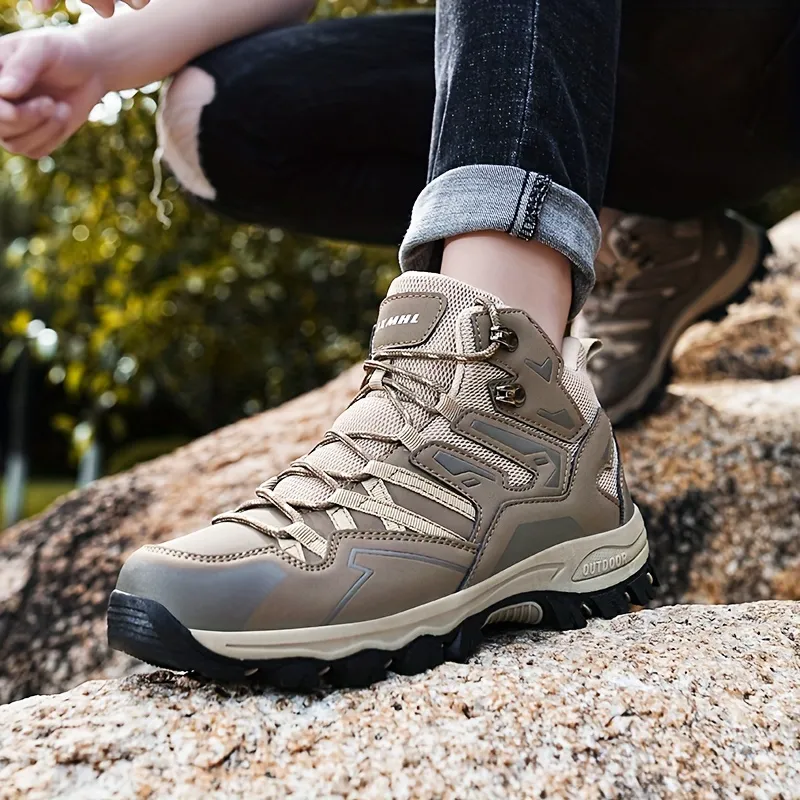
Materials, Stitching and Long-Term Durability
The materials used in the Orthopedic Mid Trekking Hiking Boots feel purpose-built for harsh outdoor demands. The full-grain leather upper is not only abrasion-resistant but also remarkably supple, offering a comfortable flex right where your foot bends. I scraped against granite boulders and sharp scrub on a desert trail, yet the outer held up without noticeable damage. This isn’t cheap synthetic material disguised as leather, it’s the real deal.
After over 50 miles, the Vibram-style outsole maintained its aggressive profile. The lugs didn’t show the usual flattening you get with budget boots, and the shock-absorbing midsoles still felt responsive underfoot. The arch support never collapsed or lost its firmness – a big plus for hikers who need consistent stability mile after mile.
To really put them through the wringer, I wore them across three distinct environments: a dusty canyon loop, a wet alpine trail, and a mixed rock-and-root mountain ascent. Sand couldn’t sneak in, thanks to the gusseted tongue. Sharp gravel didn’t cause pressure points. Even after trudging through muck, the leather didn’t crack or show signs of stiffness after drying, just wipe it down and go.
Orthopedic Mid Trekking Hiking Boots for Men on Amazon!!!
Orthopedic Mid Trekking Hiking Boots for Women on Amazon!!!
Every small detail impressed me. The reinforced stitching around high-stress zones like the toe cap and heel counter looked as tight as day one. The boot’s construction screams longevity. Even the laces are worth praising, they’re thick, round, and treated with a wax-like coating that grips well. I didn’t have to re-tie once mid-hike, which is more than I can say for most brands I’ve tested.
Overall, if you’re seeking a boot that can stand up to serious trail punishment and still look trail-ready season after season, the Orthopedic Mid Trekking Hiking Boots are more than up to the challenge.
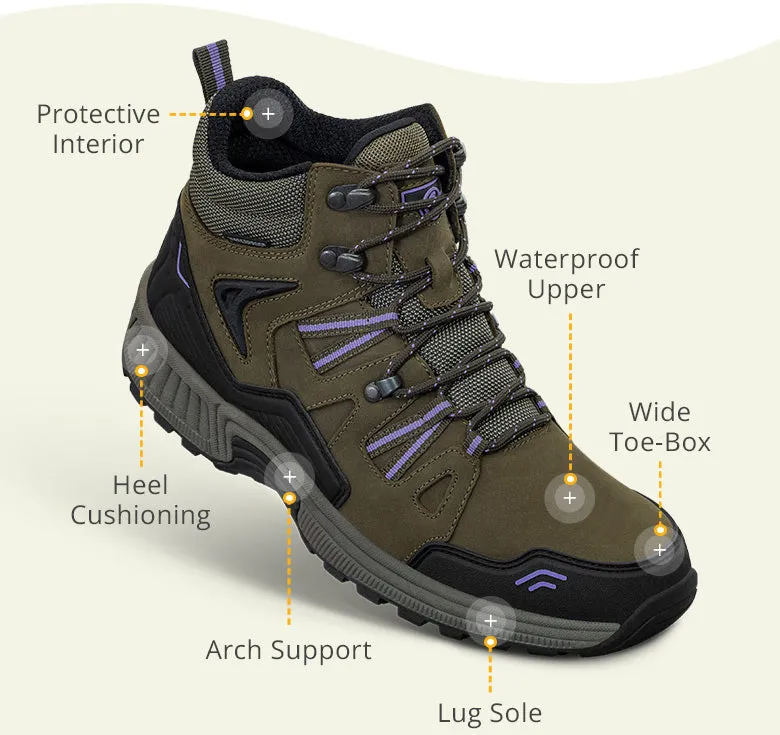
Fit and Break-In Period: What to Expect in the First Week
Out of the box, the Orthopedic Mid Trekking Hiking Boots felt a bit stiff, which is typical for supportive orthopedic hiking footwear. That said, the break-in period was smooth and surprisingly quick. Here’s how the fit evolved during my first week and what you can expect:
- Initial stiffness: Right away, the boots felt structured and firm, especially around the ankle collar and toe box. This rigidity is part of the orthopedic support system and helps maintain alignment.
- First 2–3 miles: I took them on short walks to break them in. The leather began softening and flexing with my stride, and the tongue adjusted nicely to the shape of my shin.
- Toe box comfort: Generously sized, with enough room for toe splay. I experienced no rubbing, no pressure on my toenails during descents, and no issues with blackened nails, something that’s happened with narrow boots in the past.
- Sock recommendation: Medium-thick hiking socks worked best to cushion the foot and reduce friction during the break-in. Thin socks may allow too much movement, while thick ones made the fit feel tight initially.
- Heel fit: Secure from day one. No lift, no slipping, and – most importantly – no blisters. The heel cup felt like it was shaped exactly for my foot.
- After 15 miles: The leather had molded to my foot, the arch support still felt firm and responsive, and I genuinely forgot I was still “breaking them in.” By that point, they felt custom-made.
If you’re planning a multi-day hike, I’d recommend giving the Orthopedic Mid Trekking Hiking Boots at least one or two short outings beforehand. That little investment in time will reward you with a near-perfect fit for the long haul.
How They Compare to Other Hiking Boots I’ve Worn
I’ve worn the Salomon X Ultra 4, Keen Targhee III, and Lowa Renegades on a wide range of terrain, from slick shale ridgelines to forested switchbacks. While each of these has its merits, none provided the precise orthopedic structure and stability that the Orthopedic Mid Trekking Hiking Boots deliver.
Here’s how they compare in more detail:
Salomon X Ultra 4:
- Lightweight and agile, these are great for quick day hikes.
- However, they lack deep cushioning and structured arch support.
- I often felt impact fatigue in the heel after 8+ miles.
- The narrower fit also caused issues during descents, leading to occasional toe compression.
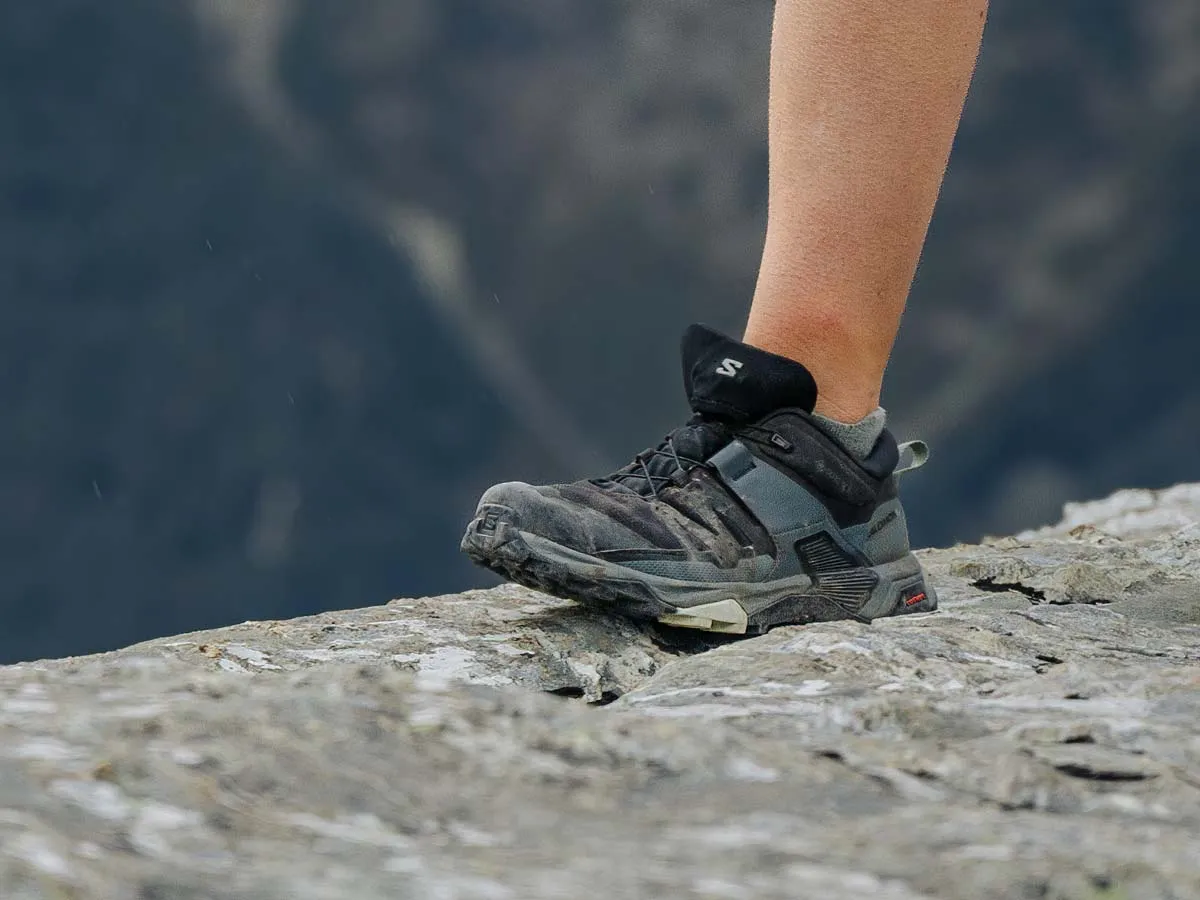
Keen Targhee III:
- Extremely roomy and known for toe-box comfort.
- Unfortunately, this extra room often sacrifices midfoot stability.
- On uneven trails, I experienced slight lateral foot movement inside the boot.
- The cushion is soft but compresses quickly on rocky terrain.
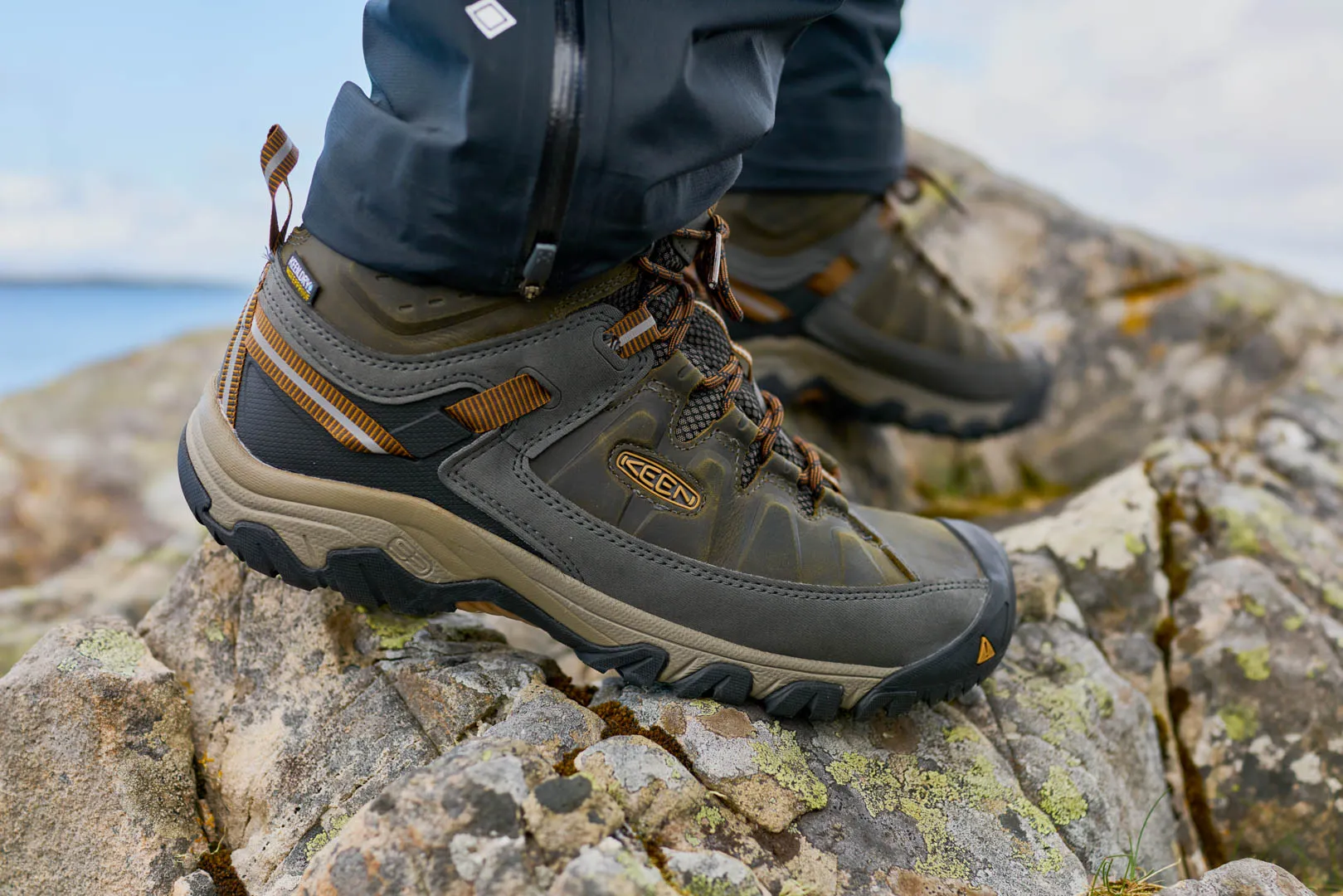
Lowa Renegade GTX Mid:
- Excellent construction with premium materials and good support.
- Price is considerably higher, nearly double the cost.
- Comparable in arch and heel support, but heavier overall.
- Break-in took longer and required thicker socks to avoid hotspots.

What sets the Orthopedic Mid Trekking Hiking Boots apart is their intentional focus on foot alignment and long-distance comfort. They feel medically engineered without looking orthopedic. The arch structure doesn’t just support, it stabilizes. The balance between rigidity and flexibility is better tuned than any of the above models.
In terms of value, they punch far above their price point. For moderate to difficult trails, especially if you’re prone to joint or arch discomfort, these boots offer a compelling combination of orthopedic function and serious outdoor capability. I’d confidently recommend them over the competition for hikers who prioritize both performance and foot health.
Orthopedic Mid Trekking Hiking Boots for Men on Amazon!!!
Orthopedic Mid Trekking Hiking Boots for Women on Amazon!!!
Pros and Cons: A Closer Look from Real Trail Use
Before you decide whether the Orthopedic Mid Trekking Hiking Boots are right for you, here’s a deeper breakdown of their standout features and potential drawbacks, based on my personal use and performance testing:
Pros (What You’ll Appreciate):
- Orthopedic-level arch and heel support: The insole design promotes proper foot alignment and significantly reduces pressure on high-impact zones, helping to prevent common hiking-related pain like plantar fasciitis and arch collapse.
- Excellent ankle stability for loaded packs: The structured ankle collar and supportive midsole create a secure fit, minimizing the risk of rolling your ankle while carrying heavy gear on uneven terrain.
- Deep-lug rubber outsoles with outstanding traction: Whether on slippery wet rocks, dusty ridges, or compact snow, the multidirectional lugs provide aggressive grip and enhance your confidence with every step.
- Water-resistant and breathable: I wore Orthopedic Mid Trekking Hiking Boot through rain, shallow creek crossings, and under hot sun. They kept my feet dry without overheating, thanks to their well-balanced waterproof membrane and ventilated lining.
- Built to withstand extended wear and tear: The abrasion-resistant leather, reinforced stitching, and rugged sole compound make these boots ready for the long haul. I logged 50+ miles with little visible wear.
Cons (What to Keep in Mind):
- Slightly heavier than ultra-light hiking shoes: At around 2 lbs per boot, they’re noticeably heavier than minimalist trail runners, though that weight brings added structure and support.
- Break-in period of 1–2 hikes: While relatively short, the initial stiffness may be uncomfortable for some. A few short outings are necessary before they mold perfectly to your feet.
- Design leans functional more than flashy: If you’re looking for sleek, modern aesthetics, these boots prioritize performance over fashion. Their rugged look may not appeal to casual hikers or urban users.
Ideal User: Who Should Buy Orthopedic Mid Trekking Hiking Boots?
If you deal with recurring foot pain, joint stress, or long treks that leave your feet aching, these boots are for you. They’re ideal for:
- Day hikers who want more support without sacrificing performance
- Backpackers carrying moderate loads
- Hikers with plantar fasciitis, flat feet, or pronation issues
- Anyone recovering from foot-related injuries who still wants to hit the trail
These aren’t just for medical needs, they’re for anyone who values long-lasting comfort over a long day of exploring.
Final Verdict: Are These the Boots That Will End Your Hiking Foot Pain?
I’ve tested many hiking boots over the years, and few combine orthopedic design with trail-ready toughness like these. You’ll go further, hurt less, and feel more confident with every step. For hikers who prioritize joint health and all-day comfort, the Orthopedic Mid Trekking Hiking Boots deliver exceptional value. If your current boots leave your feet throbbing after a few hours, consider making the switch. This isn’t just footwear, it’s foot care with serious trail performance.

